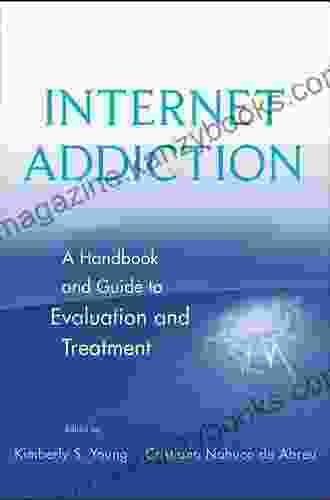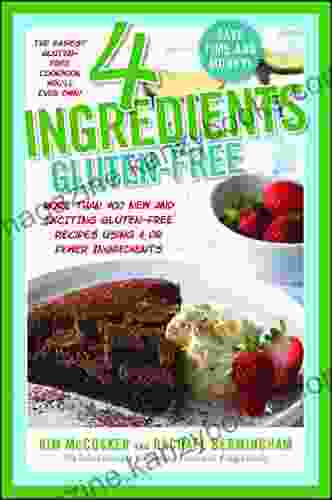Simple Guide to Conn Syndrome Diagnosis, Treatment, and Related Conditions

Conn Syndrome, also known as primary hyperaldosteronism, is a medical condition characterized by excessive production of aldosterone, a hormone produced by the adrenal glands. This hormone plays a crucial role in regulating blood pressure and potassium levels in the body. When aldosterone levels are elevated, it can lead to a range of health issues, including high blood pressure, low potassium levels, and muscle weakness.
This comprehensive guide aims to provide a clear and accessible overview of Conn Syndrome, covering its diagnosis, treatment options, and related conditions. By understanding the complexities of this condition, you can empower yourself to make informed decisions about your health and well-being.
4.6 out of 5
| Language | : | English |
| File size | : | 395 KB |
| Text-to-Speech | : | Enabled |
| Screen Reader | : | Supported |
| Enhanced typesetting | : | Enabled |
| Print length | : | 135 pages |
| Lending | : | Enabled |
Diagnosis
Diagnosing Conn Syndrome typically involves a combination of clinical evaluation, blood tests, and imaging studies.
- Clinical Evaluation: Your doctor will inquire about your symptoms, medical history, and perform a physical examination to assess your blood pressure, potassium levels, and any signs of muscle weakness or fatigue.
- Blood Tests: Blood tests can measure your aldosterone levels, renin levels (an enzyme that stimulates aldosterone production),and potassium levels. Elevated aldosterone levels and suppressed renin levels can indicate Conn Syndrome.
- Imaging Studies: Imaging techniques like CT scans or MRI scans may be used to visualize the adrenal glands and identify any tumors or abnormalities that could be causing the overproduction of aldosterone.
Treatment
The treatment approach for Conn Syndrome depends on the underlying cause and severity of the condition.
- Surgery (Adrenalectomy): For patients with an adrenal tumor, surgical removal of the affected adrenal gland is typically the recommended treatment. This procedure is known as adrenalectomy and effectively eliminates the source of excess aldosterone production.
- Medications: Medications that block the effects of aldosterone, such as spironolactone or eplerenone, can be prescribed to lower blood pressure and potassium levels. These medications do not cure Conn Syndrome but can effectively manage its symptoms.
- Lifestyle Modifications: Maintaining a healthy lifestyle, including regular exercise, a balanced diet, and stress management, can support overall well-being and potentially improve blood pressure control in patients with Conn Syndrome.
Related Conditions
Conn Syndrome can be associated with several other medical conditions, including:
- Hypertension: Elevated aldosterone levels lead to increased fluid retention and vasoconstriction, resulting in high blood pressure.
- Hypokalemia: Excess aldosterone promotes potassium excretion, leading to low potassium levels (hypokalemia).
- Cardiovascular Disease: Long-standing Conn Syndrome can increase the risk of heart disease, stroke, and kidney problems.
- Metabolic Syndrome: Conn Syndrome can contribute to metabolic syndrome, a cluster of conditions that includes abdominal obesity, high blood pressure, and abnormal cholesterol and glucose levels.
- Adrenal Adenoma: In most cases of Conn Syndrome, an adrenal adenoma (a non-cancerous tumor) is the underlying cause of aldosterone overproduction.
- Idiopathic Hyperaldosteronism: In some cases, the cause of Conn Syndrome cannot be determined, and it is referred to as idiopathic hyperaldosteronism.
Conn Syndrome is a complex medical condition that requires proper diagnosis and management to prevent serious health consequences. By understanding the causes, symptoms, and treatment options, you can work closely with your doctor to develop a personalized treatment plan that meets your specific needs. Early diagnosis and appropriate intervention can effectively control Conn Syndrome and improve your overall health and well-being. Remember, knowledge is power, and empowering yourself with information about this condition is the first step towards optimal health outcomes.
4.6 out of 5
| Language | : | English |
| File size | : | 395 KB |
| Text-to-Speech | : | Enabled |
| Screen Reader | : | Supported |
| Enhanced typesetting | : | Enabled |
| Print length | : | 135 pages |
| Lending | : | Enabled |
Do you want to contribute by writing guest posts on this blog?
Please contact us and send us a resume of previous articles that you have written.
 Book
Book Novel
Novel Page
Page Chapter
Chapter Text
Text Story
Story Genre
Genre Reader
Reader Library
Library Paperback
Paperback E-book
E-book Magazine
Magazine Newspaper
Newspaper Paragraph
Paragraph Sentence
Sentence Bookmark
Bookmark Shelf
Shelf Glossary
Glossary Bibliography
Bibliography Foreword
Foreword Preface
Preface Synopsis
Synopsis Annotation
Annotation Footnote
Footnote Manuscript
Manuscript Scroll
Scroll Codex
Codex Tome
Tome Bestseller
Bestseller Classics
Classics Library card
Library card Narrative
Narrative Biography
Biography Autobiography
Autobiography Memoir
Memoir Reference
Reference Encyclopedia
Encyclopedia Robin Fields
Robin Fields S Roystone Neverson
S Roystone Neverson Ken Ford
Ken Ford Nick Swettenham
Nick Swettenham Kenyata Long
Kenyata Long W W Jacobs
W W Jacobs Martin Kohlmeier
Martin Kohlmeier Prashanth Rayakar
Prashanth Rayakar Kevin E Ready
Kevin E Ready Stephanie Niemis
Stephanie Niemis Miriam Backes
Miriam Backes Matt Freedman
Matt Freedman Kiki Thorpe
Kiki Thorpe Kimberly A Kenney
Kimberly A Kenney Marjorie Kramer
Marjorie Kramer Mel Stein
Mel Stein Sam Christer
Sam Christer Mary Holland
Mary Holland Sean Bartram
Sean Bartram Alan H Pressman
Alan H Pressman
Light bulbAdvertise smarter! Our strategic ad space ensures maximum exposure. Reserve your spot today!

 Jeffrey Hayes150 Sweet Savory Recipes Celebrating The Fresh Picked Flavors Of Fruits Herbs
Jeffrey Hayes150 Sweet Savory Recipes Celebrating The Fresh Picked Flavors Of Fruits Herbs Adam HayesFollow ·3.7k
Adam HayesFollow ·3.7k Nathaniel HawthorneFollow ·19.8k
Nathaniel HawthorneFollow ·19.8k Edison MitchellFollow ·16.3k
Edison MitchellFollow ·16.3k Donovan CarterFollow ·18.8k
Donovan CarterFollow ·18.8k Jon ReedFollow ·18.5k
Jon ReedFollow ·18.5k Devin CoxFollow ·18.7k
Devin CoxFollow ·18.7k Edward ReedFollow ·4.3k
Edward ReedFollow ·4.3k Dakota PowellFollow ·10.2k
Dakota PowellFollow ·10.2k

 Ernesto Sabato
Ernesto SabatoLoving Table: Creating Memorable Gatherings
Gatherings...

 Mark Twain
Mark TwainLifestyle After Cancer: The Facts
Cancer is a life-changing...

 Keith Cox
Keith CoxUnlocking the Nutritional Needs of Individuals with...
Individuals with physical disabilities...

 Rubén Darío
Rubén DaríoHandbook And Guide To Evaluation And Treatment
Empowering Healthcare...

 Andy Hayes
Andy HayesUnveiling the Truth: "Garden Myths" by Robert Pavlis...
The world of gardening is often filled with a...
4.6 out of 5
| Language | : | English |
| File size | : | 395 KB |
| Text-to-Speech | : | Enabled |
| Screen Reader | : | Supported |
| Enhanced typesetting | : | Enabled |
| Print length | : | 135 pages |
| Lending | : | Enabled |












